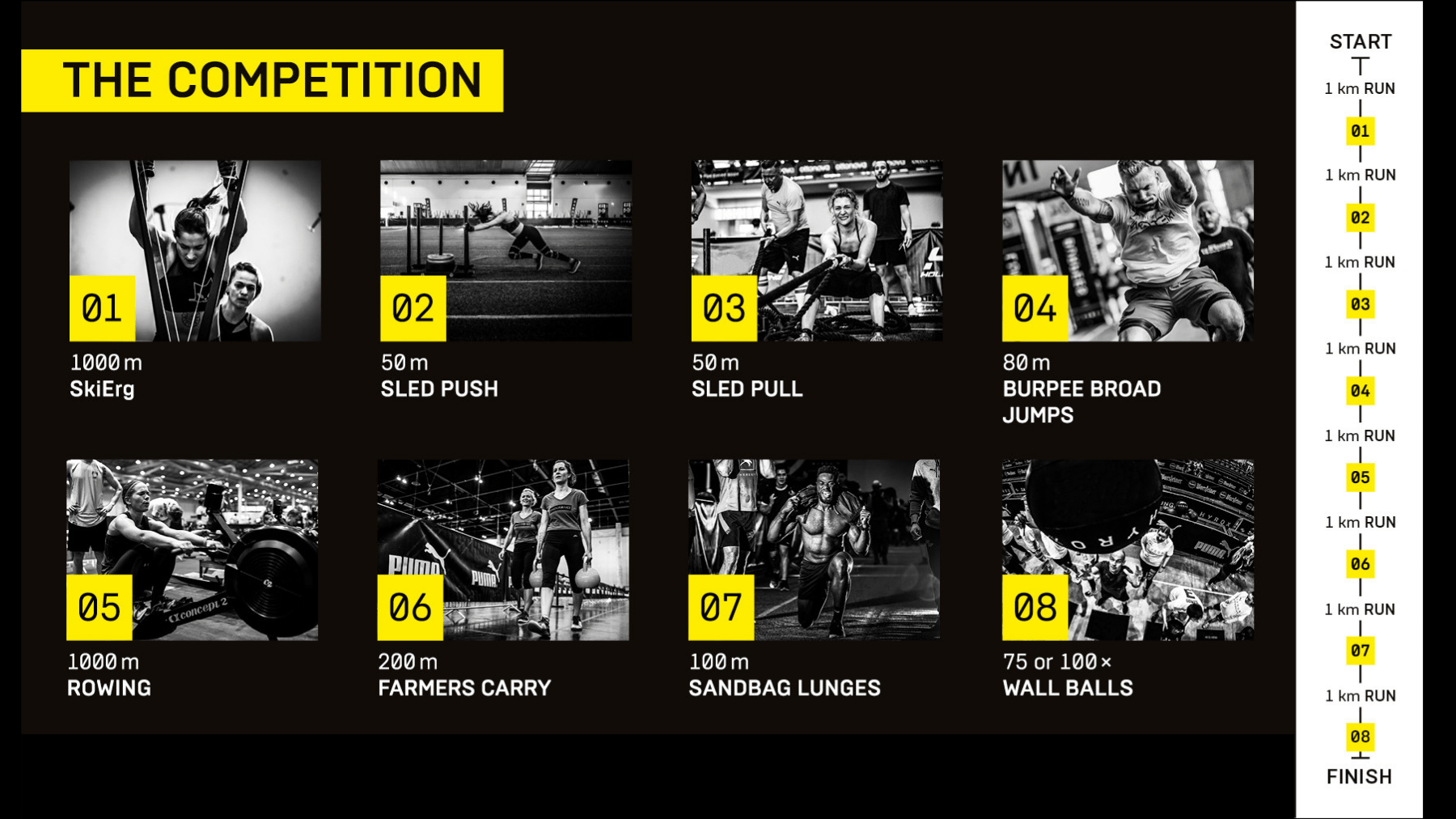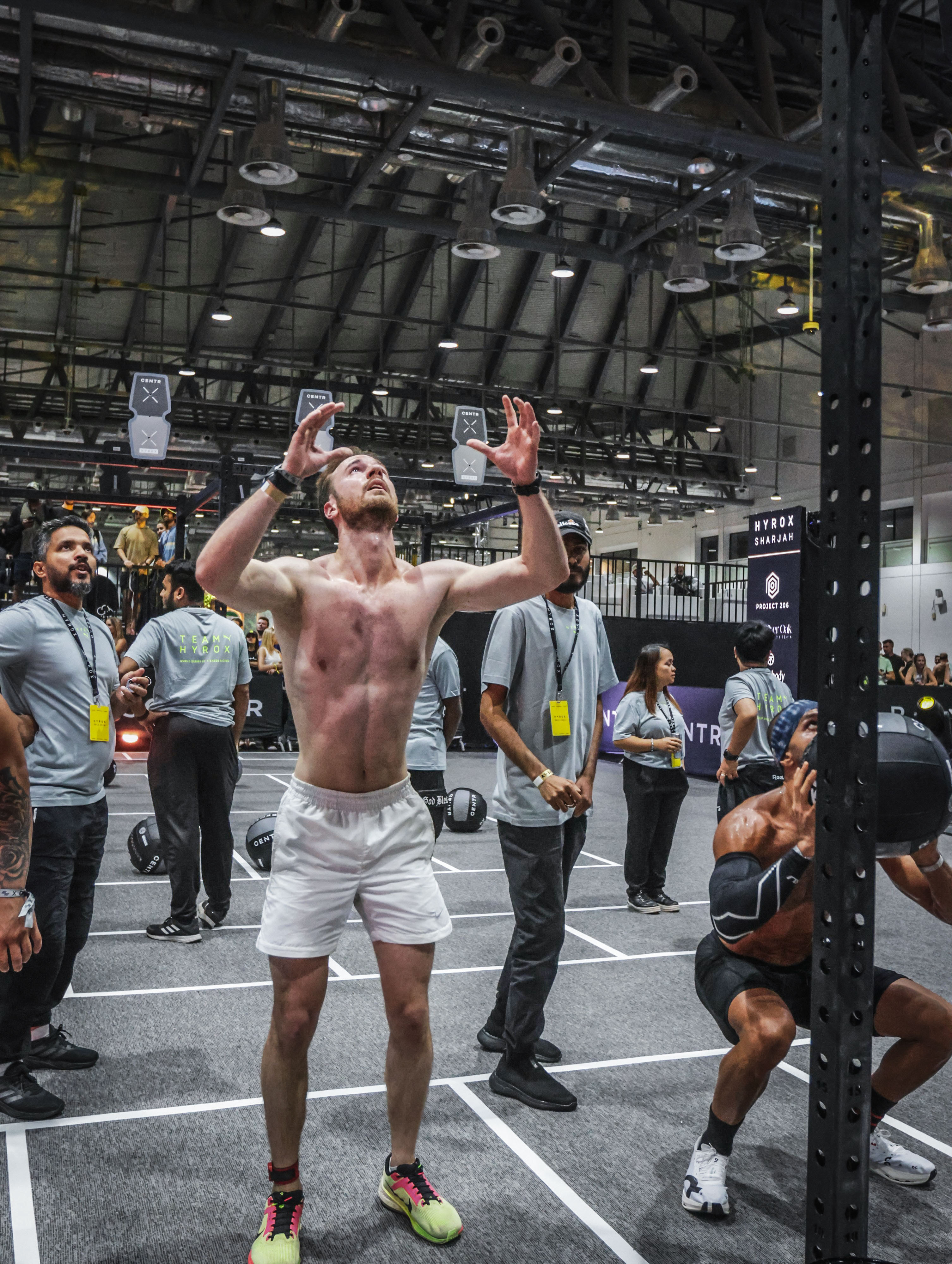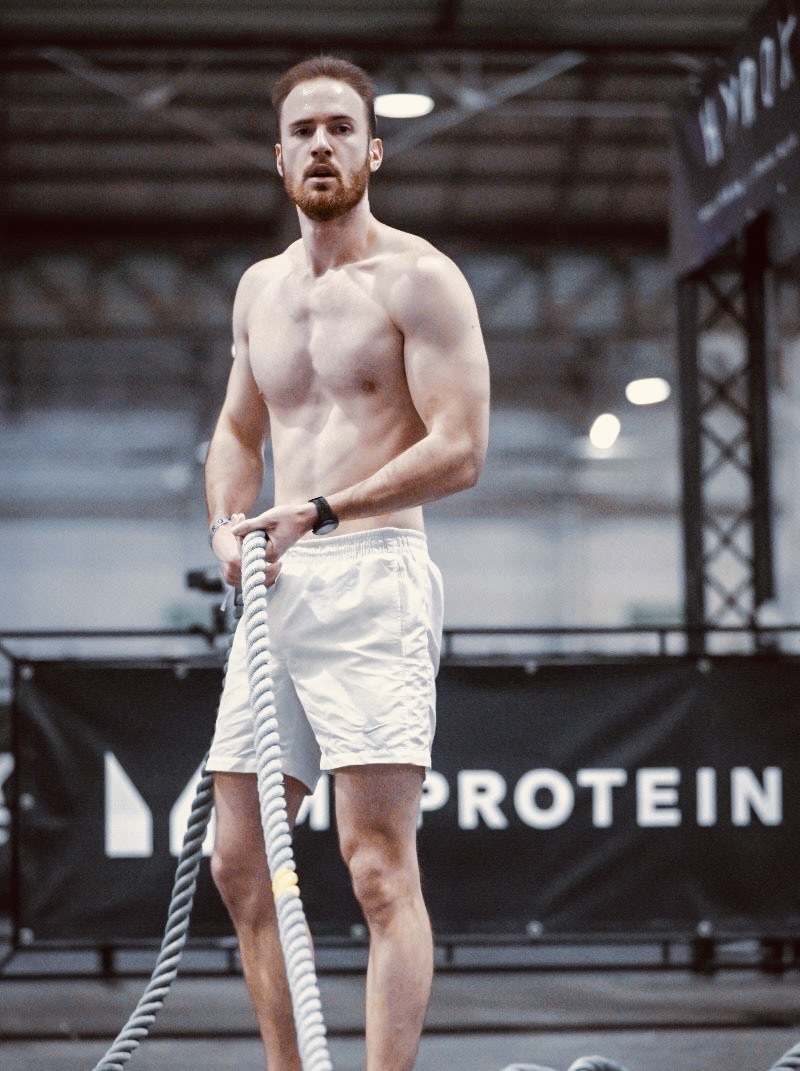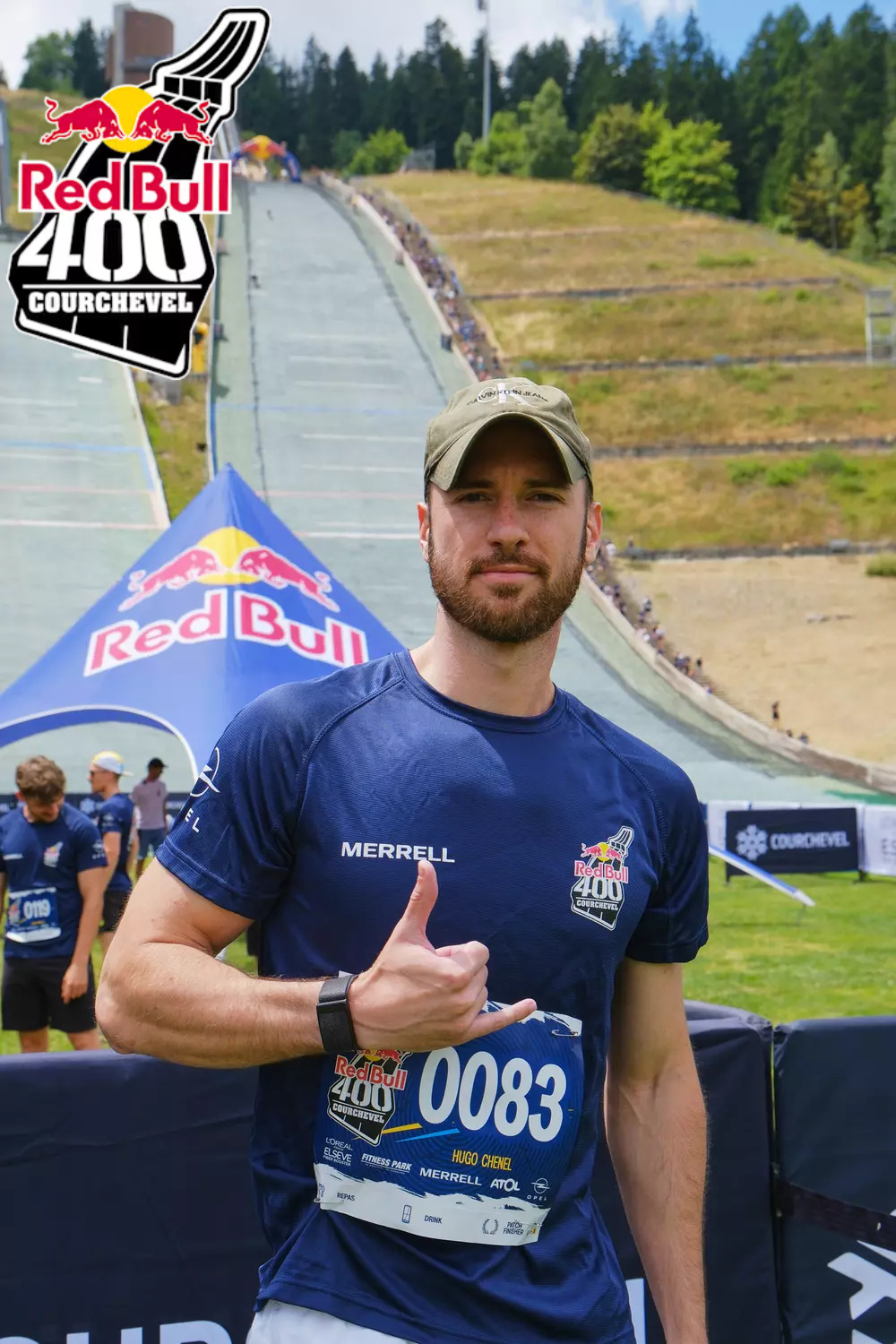In developing my training philosophy, I was influenced by some of the most respected names in athletic performance and human optimization: Ben Greenfield, Dr. Andy Galpin, Mark Bell, Dr. Peter Attia, Dr. Andrew Huberman, Ben Patrick, Dr. Kelly Starrett and Pavel Tsatsouline. Their different visions have shaped my training programs, progressively orienting myself toward weightlifting, gymnastics, and running, participating in Hyrox and CrossFit events. I try to fully develop myself as a hybrid athlete across strength, endurance and explosiveness. All my personal records and competition results are tracked, serving as benchmarks to evaluate my progress. Regular assessments help fine-tune my approach.
What follows is an overview of my benchmark, fitness competition results and training components. Each one of these components plays a specific role in improving strength, power or endurance, supporting a long-term vision of peak athletic performance.
Foundations
1 - Strength and power training
Strength and power development are one of the most important parts of my training, especially through weightlifting and resistance training. I use a mix of compound movements from powerlifting (bench, military press, squat) or gymnastics (pull-up, dip, muscle-up, chin-up), and high-velocity exercises (plyometrics, olympic lifts) to build a powerful foundation.
2 - HIIT and anaerobic capacity
Mixing steady-state endurance work with high-intensity interval training is ideal to improve VO2 max and lactate threshold, thus transforming your anaerobic capacity. It can be in various forms, from sprint intervals to crossfit WOD.
3 - Aerobic base and cardio conditioning
I highly value building a strong aerobic base for sustained endurance. I incorporate low-intensity and long-duration aerobic sessions to build an efficient cardiovascular base, which supports various body processes (recovery, fat metabolism) but also provides a foundation for higher-intensity efforts.
4 - Periodized training
Cycle through different training focuses such as endurance, strength and power phases to allow for recovery/adaptation. I align training phases with specific athletic goals of the period.
5 - Mobility and movement quality
I highlight the importance of natural functional movement to prevent injuries and improve overall performance. That’s why I’m dedicating time to mobility work to improve range of motion, with or without weight.
6 - Functional training
The incorporation of functional movement patterns ensures that skills are practical, transferable to real-life situations. By incorporating compound lifts, the body is trained as a cohesive unit rather than isolating muscles, which by experience greatly improves coordination, balance and strength in most settings. That’s why it’s also important to vary exercise inclination, hand positioning and equipment type (switching between barbells, dumbbells and kettlebells): it adds layers of complexity that challenge the body in meaningful ways. Each adjustment recruits muscles differently and enhances neuromuscular coordination (building resilience in various movement patterns).
7 - Recovery
Recovery is an essential component to maintain high performance over the long term and don’t break the body. Sleep and adequate nutrition are the most important but I also include frequent cryotherapy and sauna sessions as well as daily breathwork. Evaluating your current state before training is a good idea with CNS tap tests based on reaction time (nervous system fatigue) and RHR/HRV monitoring (stress/fatigue level) using Whoop, Oura ring or Garmin. Use these tools to adjust training based on recovery status.
8 - Nutrition
Don’t jump on any diet but find an individualized diet that helps your performance.
Nutrient timing can be important (carb backloading in my case) and balance macronutrients to match training intensity. Generally, you need to incorporate unprocessed whole foods, adapt carbohydrates based on your need, and consider intermittent fasting or fasted training to enhance metabolic flexibility.
9 - Mental resilience
To face physical challenges easily, I encourage the development of mental toughness with exercises like long duration endurance challenges, cold/hot exposure or any deliberate discomfort training. Breathwork like the Wim Hof method can also be excellent for pain tolerance.
10 - Biohacking and monitoring
I promote personalized and data-driven approaches using tools like wearables (HR monitors, sleep trackers) and perform frequent bloodwork to make smart training variations based on biomarkers. They can guide personalized adjustments to amplify results and performance.
Body profile
Physical attributes
Height: 182 cm / 6 ft
Weight: 72 kg / 159 lbs
Body type: Ectomorph
Physiological metrics
1) Cardiovascular and respiratory
VO2 max: 62 ml/kg/min
Lactate threshold: 81% of VO2 max
Resting heart rate: between 39 and 44 bpm
Heart rate variability: between 95 and 115 ms
Breath holding time (static apnea): 4min34
2) Muscular and skeletal
Lean muscle mass percentage: ⌛%
Body fat percentage: 8.5-9.5%
T-score: ⌛
Grip strength: 72kg
Grip endurance (dead hang): 2min13
3) Hormonal
Testosterone: 850 ng/dl
Free testosterone: 26.2 pg/ml
Estrogen: 20 pg/ml
Benchmark
Weightlifting & Gymnastics
- Personal records:
- Pull-ups (strict): 27 rep
- Weighted pull-up (1RM): 45 kg
- Dips: 52 rep
- Weighted dip (1RM): 70 kg
- Muscle-ups: 16 rep
-
Weighted muscle-up (1RM): 15 kg
- Broad jump: 3m02
-
Vertical jump (box jump): 1m45
- SBD
- Bench press: 102.5 kg
- Back squat: 110 kg
- Deadlift: 160 kg
- Clean and jerk: 85 kg
-
Snatch: 65 kg
- Military press (strict): 65 kg
- Pistol squat (single right & left leg ): 27 rep & 22 reps
- Weighted pistol squat (1RM): 20 kg
- Plank: 12:18
- Dead hang: 2:13
Hyrox

👉🏼 Check out all my Hyrox races and stats here!
-
2025/04 HYROX Sharjah, UAE 🇦🇪
Time — 01:14:49 -
2024/12 HYROX Marseille, France 🇫🇷
Time — 01:22:37 (+5min penalty)


CrossFit
CrossFit Open 2025
Level 5 · 44–54% · Intermediate
Red Bull 400

The Red Bull 400 is known as the world’s toughest 400-meter race, where participants sprint up a ski jumping hill at a nearly vertical incline. It challenges endurance, strength (explosive leg power) and cardiovascular capacity in such a unique way.
- Courchevel, France
2025
Time : 05:22
Stage : Semi-Final
Check out more about the Red Bull 400.
Running
- Personal bests:
- 400m: 0:58
- 800m: 2:32
- 1600m: 5:32
- 3200m: 11:38
- 5K: 19:06
- VMA @ 18.2 km/h
- Official races (3K & 5K)
- La Ronde du Printemps 2025
Position ► 24/205 - Corrida pédestre de Toulouse 2024
Position ► 44/821
- La Ronde du Printemps 2025
Training
Schedule
| Day | Focus | Exercises |
|---|---|---|
| Monday | Strength - Push Chest Shoulders Triceps |
Bench Press, Military overhead press, Dips, Standing shoulder press Lateral/front dumbell raises, Tricep extensions, Push-ups, Rope climbing |
| Tuesday | Strength - Pull Back Biceps |
Barbell row / T-row, Pull-ups, Muscle-ups, Pull-down Chin-ups, Curl |
| Wednesday | Cardio (Zone 2) | Long run or cycling (60-120 minutes) |
| Thursday | Explosive power | Power clean, Thruster, Clean and jerk, Snatch |
| Friday | Strength - Legs Core stability |
Back/front/pistol/split ATG squat, Lunges, Tibialis raises, ATG calf raises, Step-ups Nordic hamstring curl, Planks, Hollow body hold, Leg raises, Backward sled drag |
| Saturday | HIIT (zone 5) | Crossfit WOD Rowing, jump rope, assault bike, sprints Box jumps, kettlebell swings, sled push/pull, wall ball VMA intervals, Norwegian 4x4 protocol, Threshold training |
| Sunday | Recovery |
Sauna, Cold plunge or Isolation tank |
Details and practices
Sets and Reps
I frequently change or adjust sets and reps based on goals: low reps (1-4) with heavy weights for strength, moderate reps (8-12) for hypertrophy, and high reps (16+) with lighter weights for endurance. I also often incorporate pyramidal training. In the end, to improve physical conditioning, the most important is not sets, reps or weight but the total volume.
Intensity levels and rest intervals
Intensity in my training varies to prevent overtraining (based on Whoop stats) and guide progressive overload without exhaustion.
Equipment
Incorporating barbells, dumbbells, kettlebells and even a sledgehammer keeps workouts dynamic and challenges muscles differently with slightly different hands position for example.
Training hours
I prefer to train in the early evening because it aligns perfectly with my body’s natural rhythms. By late afternoon, my body temperature reaches its peak (enhancing muscle function), which I found allows me to lift heavier weights more effectively. Also, hormonal balances, particularly higher testosterone levels relative to cortisol, are more favorable during this time, promoting even better strength gains.
Grip strength focus
Regular farmer’s carries and dead hanging are performed to boost grip strength and functional fitness relevant to most activities.
Handstand
I include handstand practice into my routine to enhance balance, core strength and shoulder stability. Handstands do wonders for body awareness and proprioception, which contributes to better control during complex movements.
Flexibility routine
I perform dynamic stretches before workouts and static stretches outside of training to maintain flexibility and mobility.
Plyometrics and isometrics
These 2 types of exercise are done every week: plyometric exercises like box jumps to build explosive power, while isometric holds like planks are integrated to enhance muscle control but also essential for tendon/ligament strength.
Unilateral movements
Training one side of the body at a time isn’t just about fixing imbalances, it’s about building a stronger, more stable foundation. Exercises like Bulgarian split squats strengthen stabilizers, a must have in your training.
Barefoot training
I try to incorporate barefoot training when I can to strengthen the intrinsic muscles of the feet, which is key to greatly impact the balance and enhance proprioception. Training without shoes allows for a more natural range of motion, promoting better alignment during exercises.
Nasal breathing most of the time (especially during zone 2 cardio)
Practicing nasal breathing during low-intensity cardio is great to improve oxygen efficiency and increase CO₂ tolerance.
Timing matters
Scheduling some practices like cold showers, sauna sessions, high-dose antioxidant supplementation or static stretching away from training sessions is really crucial because these activities can interfere with the body’s natural recovery and adaptation processes following exercise. Immediately after training, our body undergoes specific inflammatory and hormonal responses essential for muscle repair and growth. Engaging in these practices too close to your workouts will blunt beneficial inflammation but also divert energy needed for recovery. The effectiveness of the training is thus reduced, so maintain sufficient time between exercise and these activities.
Tools
Rebounding
Number one exercise to boost lymphatic flow is a trampoline workout. In addition, it slightly improves balance and coordination. The gentle bouncing stimulates the lymphatic system, ideal to promote detoxification. This low-impact activity should be used by people having knee or ankle pain because it will strengthen stabilizer muscles.
Occlusion training
I sometimes use light weights with Blood Flow Restriction (BFR) bands to maximize muscle growth and recovery. Great for low-impact, high-reward sessions. BFR bands are placed to the arms or legs, restricting blood flow back from the muscle, which amplifies the pump and signals muscle growth. The best part? It’s joint-friendly and perfect for high-rep burnout sets.
Electrical Muscle Stimulation (EMS)
Powerful tool I use outside of my training hours. By sending low-level electrical impulses to targeted muscles, EMS helps to recover and even build strength. Whether it’s for rehab or working on weaknesses, EMS adds an edge by recruiting fibers we might miss during traditional training. It’s a tech-driven boost for performance and recovery.
Recovery
Whoop profile
Tools like the Whoop is used to monitor various markers such as HRV, RHR, sleep quality and strain to tailor recovery strategies.
- Resting Heart Rate (bpm): 39 < RHR < 44
A low RHR reflects great cardiovascular health. If it spikes above normal, it’s my body’s way of telling me to ease up. - Heart Rate Variability (ms): 95 < HRV < 115
High HRV means I’m ready to tackle intense sessions. When it dips, I prioritize lighter activity or active recovery.
CNS Tap Test
My average result on the CNS tap test is 100 taps in 10 seconds. If my performance drops by 10% or more (below 90 taps), it’s a clear sign that my central nervous system might not be fully recovered. This probably indicates exhaustion, suggesting me to adjust my training intensity.
Tracking these metrics helps me find the perfect balance between effort and recovery, ensuring I stay on top of my game without risking overtraining. For a detailed breakdown of my recovery strategies, check out the Biohacking page.